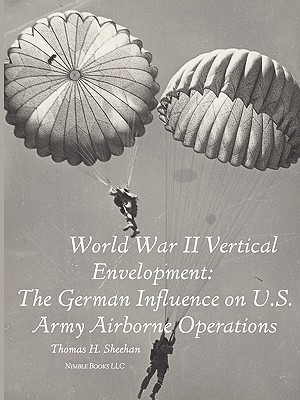
- We will send in 10–14 business days.
- Author: Thomas J Sheehan
- Publisher: Nimble Books
- ISBN-10: 1608880397
- ISBN-13: 9781608880393
- Format: 21 x 27.9 x 0.5 cm, minkšti viršeliai
- Language: English
- SAVE -10% with code: EXTRA
Reviews
Description
This study traces the development of the United States Army's airborne concept during World War II. More than any other precedent, German airborne operations against Crete influenced the evolution of U.S. Army airborne doctrine, organization, and utilization. Consequently, the author compares the U.S. and german airborne experiences, with an emphasis on the former.
The formative period ran from 1940 through May 1941, while the expansion period extended into 1943. A major point of departure and comparison was the German invasion of Crete in May 1941 (Operation Merkur), which lent important impetus to U.S> airborne development. Without knowledge of the severity of German losses at Crete and the shortcomings in airborne doctrine that the German experience exposed, U.S. planners accepted Crete as their model on which to base rapid airborne expansion. Subsequently, Operation Husky, the invasion of Sicily, taught U.S. airborne planners to to evolve their own lessons. Crete remained the inspiration, but was no longer the roadmap.
EXTRA 10 % discount with code: EXTRA
The promotion ends in 22d.13:41:46
The discount code is valid when purchasing from 10 €. Discounts do not stack.
- Author: Thomas J Sheehan
- Publisher: Nimble Books
- ISBN-10: 1608880397
- ISBN-13: 9781608880393
- Format: 21 x 27.9 x 0.5 cm, minkšti viršeliai
- Language: English English
This study traces the development of the United States Army's airborne concept during World War II. More than any other precedent, German airborne operations against Crete influenced the evolution of U.S. Army airborne doctrine, organization, and utilization. Consequently, the author compares the U.S. and german airborne experiences, with an emphasis on the former.
The formative period ran from 1940 through May 1941, while the expansion period extended into 1943. A major point of departure and comparison was the German invasion of Crete in May 1941 (Operation Merkur), which lent important impetus to U.S> airborne development. Without knowledge of the severity of German losses at Crete and the shortcomings in airborne doctrine that the German experience exposed, U.S. planners accepted Crete as their model on which to base rapid airborne expansion. Subsequently, Operation Husky, the invasion of Sicily, taught U.S. airborne planners to to evolve their own lessons. Crete remained the inspiration, but was no longer the roadmap.


Reviews